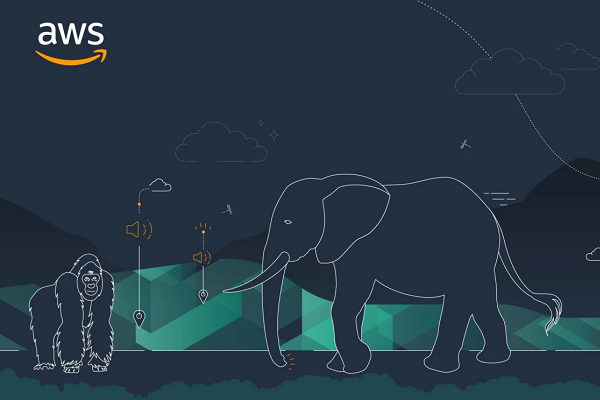Amazon is Sharing a Massive Audio Database of Wildlife
 Amazon Web Services (AWS) is offering access to more than a million hours of audio recorded in the rainforests of the Republic of Congo. The data includes the sounds of possibly thousands of species and provides insights on their behavior, the health of the ecosystem, and other often elusive information.
Amazon Web Services (AWS) is offering access to more than a million hours of audio recorded in the rainforests of the Republic of Congo. The data includes the sounds of possibly thousands of species and provides insights on their behavior, the health of the ecosystem, and other often elusive information.
Elephant Recognition
The audio database is part of the Elephant Listening Project run out of Cornell University. Researchers set up 50 microphones in small boxes tied to trees to collect the sounds of elephants, who are often very shy despite their size. The audio gathered over the last three years tells the story of elephant migration to areas with enough vegetation to feed them. A darker side benefit of the audio is the discovery of poachers and the ability to monitor where they relocate, improving the efficiency of anti-poaching patrols and removing some of the illegal hunters in the area.
Elephants were just one species whose calls were brought into the database. Gorillas, grey parrots, and dozens of other endangered species can be heard in the recordings. The trick is to break down the audio tracks based on the species and then analyze each to learn about what the animals are like when completely removed from humans.
“There is so much information in these recordings. You could use them to study any number of different animals. We know, for example, that the African grey parrot is in serious decline, and we know we have captured its calls. If you study this species, there could be very valuable data in there on its movements and behavioral patterns,” Elephant Listening Project director Peter Wrege said. “No one has ever been able to look at this sort of shifting use of an environment by an elephant population before,” he added. “The real take-home from our first set of analyses is that their use of the landscape is very complex. This is vitally important for thinking about conservation strategies and potential effects of climate change on elephant populations.”
Audio Ecosystems
Wrege has shared the database through the AWS Open Data Sponsorship Program, which provides a space for scientific data to be stored for research access. The project isn’t even the only wildlife audio analysis program at Cornell. Google’s bioacoustics team teamed up with Cornell’s Lab of Ornithology last year to run a competition for an AI model that could be trained to pick out individual birds by species with recorded soundscapes of the wilderness. Collecting, analyzing, and understanding wildlife audio taken from nature could end up as much a crucial element of the voice tech space as anything involving human voices.
“There are just so many potential applications for the recordings,” Wrege said. “As is the case with so much in research, the more we find out, the less we realize we understand. We still know so little about forest elephants. I think there are an unlimited number of scientific questions you can run on these data.”
Follow @voicebotai Follow @erichschwartz
Voice Match is for the Birds: New Google Competition Seeks Avian Audio AI
Netherlands World Wildlife Fund Launches Google Assistant Action for Kids








